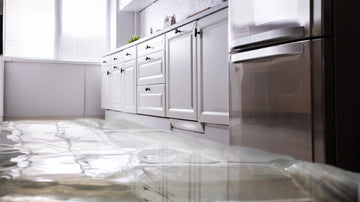In todays era of smart technology, where virtually everything in our homes can be controlled via our smartphones, the question arises, 'do I need a leak sensor'? For those in the field of Industry QA, the significance of this question stretches beyond personal use; it penetrates the core of safety and preventive strategies.

Understanding Water Leak Sensors
Water leak sensors are devices designed to detect leaks and alert the homeowner before significant damage occurs. Whether you are concerned about a tiny drip under the sink or a more catastrophic event, these clever gadgets could be your homes best defense against water disasters.
By installing a leak sensor, you mitigate the risk of costly water damage repairs, which significantly outweigh the modest investment in a good quality sensor. Understanding how these devices work can help you make an informed decision. Typically, a sensor is placed in strategic locations where water hazards are high, such as basements, bathrooms, or under kitchen sinks. When water is detected, the sensor sends alerts to your smartphone, allowing for immediate action.
Benefits of Using Leak Sensors
Industry QA professionals understand the principles of redundancy and the importance of preventive measures. Just like in quality assurance practices, where anticipating a fault is crucial, leak sensors proactively safeguard your property. The benefits extend far beyond just preventing water damage:
- Financial Savings: Avoid expensive repairs and replacements caused by water damage.
- Home Safety: Minimize risks associated with mold growth, which poses health risks.
- Property Value: Maintain and protect the structural integrity of your home.
Cost of Installation
One might wonder about the costs associated with these devices. According to a study highlighted in our piece on Water Leak Sensor Cost, the price point ranges, providing options for different budgets. Importantly, these sensors offer a return on investment by significantly reducing repair costs.
How Do Leak Sensors Work?
The concept behind leak sensors is simple, yet highly effective. Sensors, either wireless or wired, detect the presence of water through moisture sensors or conductive prongs. When water contact is made, it completes a circuit that triggers an alarm or sends a notification through connected devices. This instant warning system enables homeowners to act swiftly and prevent further water loss or damage.
For a deeper dive into this technology, we highly recommend reading How Does a Water Leak Detector Work?
Choosing the Right Leak Sensor
Not all leak sensors are created equal, and selecting the right one involves evaluating features such as alert systems (text, app notifications), connectivity (Wi-Fi, Bluetooth), and additional features like temperature sensors. Our analysis on the Water Leak Detector Reviews can guide you in choosing the best option for your specific needs.
Conclusion: Is a Leak Sensor Right for You?
As someone with a professional interest in Industry QA, incorporating smart leak prevention systems into your repertoire of home safety devices is not just advisable; its essential. These gadgets embody the balance of convenience and efficiency, offering peace of mind in maintaining a secure, damage-free home environment.
For further reading on the advantages of integrating technology for home protection, check out Smart Leak Detection Systems.

FAQs
-
What areas in my home should focus on installing leak sensors?
Focus on areas prone to leaks, such as bathrooms, kitchens, laundry rooms, and basements.
-
Can a leak sensor prevent all types of water damage?
While it cannot prevent natural disasters, a leak sensor can mitigate and alert you to minor leaks that might otherwise go unnoticed.
-
How often should leak sensors be tested?
To ensure optimal performance, conduct routine checks monthly to verify the sensor is functional and responsive.






